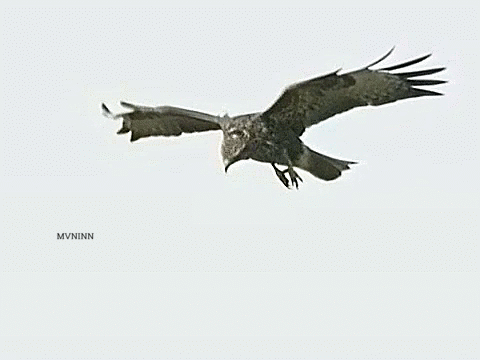Science
Related: About this forumThe hawk has landed: braking mid-air to prioritize safety over energy or speed
JULY 3, 2022
by University of Oxford

Credit: CC0 Public Domain
Researchers at the University of Oxford have found that hawks control their flight to ensure the safest landing conditions when perching, even if it takes longer and more energy to do so. Understanding how birds optimise their landing manoeuvres through learning may help in developing small aircraft capable of perching like birds.
In new research published in Nature, four Harris' hawks wearing tiny retroreflective markers were tracked flying back and forth between two perches. Their precise movements were recorded by 20 motion capture cameras positioned around the room, allowing the research team to reconstruct their flight paths on over 1,500 flights. The research team then used computer simulations to understand why the birds chose their particular path to the perch.
Aircraft have the luxury of using a runway for braking after landing to reduce speed. In contrast, birds must brake before they arrive at the perch—however slowing down to a safe speed while in flight risks stall, leading to a sudden loss of flight control. The researchers discovered that the hawks follow a flight path that slows them down to a safe speed but minimises the distance from the perch at which they stall.
To minimise stall, the hawks dived downwards while flapping, before spreading their wings into a gliding posture as they swooped up to the perch. By selecting just the right speed and position from which to swoop up to the perch, the birds were already within grabbing distance of the perch when they stalled, keeping their landings as safe and controllable as possible.
More:
https://phys.org/news/2022-07-hawk-mid-air-prioritize-safety-energy.html
Goonch
(3,810 posts)